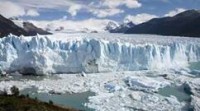From Alexandre Aguiar, MetSul Meteorologia (Brazil)
A news wire by the EFE news agency got great attention in the Latin American media in the recent days. A study conducted by the Mexican university UNAM (Universidade Nacional Autonoma de Mexico) warns that a new Little Ice Age is imminent. The forecast calls for a period of 60 to 80 years of cooling due to the reduced solar activity. The research was presented by Victor Manuel Velasco of the UNAM’s Geophysics Institute. Velasco told the audience during a conference that the recent break in the Perito Moreno glaciar (Argentina) occurred for natural reasons and cannot be attributed to global climate change.

The Mexican researcher also criticized the forecasts of the IPCC of a warming globe. Victor Manuel Velasco emphasized the Sun is undergoing a period of transition towards a period of very low activity. An English translation of his report follows:
An expert from the National Autonomous University of Mexico predicted that in about ten years the Earth will enter a “little ice age” which will last from 60 to 80 years and may be caused by the decrease in solar activity. Victor Manuel Velasco Herrera, a researcher at the Institute of Geophysics of the UNAM, as argued earlier during a conference that teaches at the Centre for Applied Sciences and Technological Development.
Velasco Herrera described as erroneous predictions of the Intergovernmental Panel on Climate Change (IPCC), pursuant to which the planet is experiencing a gradual increase in temperature, the so-called global warming. The models and forecasts of the IPCC “is incorrect because only are based on mathematical models and presented results at scenarios that do not include, for example, solar activity,” said the specialist also in image processing and signs and prevention of natural disasters. The phenomenon of climate change, he added, should include other kinds of factors, both internal, such as volcanoes and the very human activity, and external, such as solar activity. “In this century glaciers are growing”, as seen in the Andes, Perito Moreno, Logan, the highest mountain in Canada, and with Franz-Josef Glacier, New Zealand, said Velasco Herrera. The prognosis on the emergence of a new Ice Age has little uncertainty as to their dates. The latest, according to Victor Manuel Velasco, could arrive in approximately two years. In another lecture he gave at the beginning of last December, the same expert had said that the cooling would arrive within 30 or 40 years. And in early July, Velasco Herrera said that satellite data indicate that this period of global cooling could even have already begun, since 2005.
See other similar prognoses of a turn to colder conditions in the last year here.


